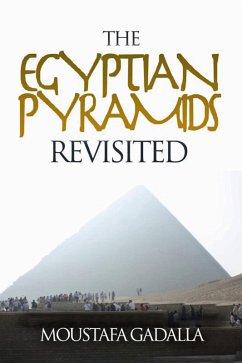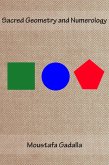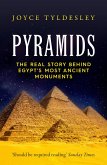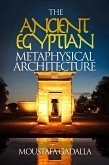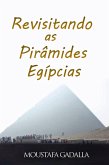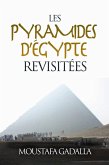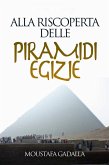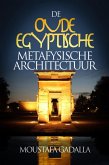A complete handbook about the pyramids of Ancient Egypt during the Pyramid Age. It contains: the locations and dimensions of interiors and exteriors of the pyramids; the history and builders of the pyramids; theories of construction; theories on their purpose and function; the sacred geometry that was incorporated into the design of the pyramids; and much, much more. This Expanded Edition of the book consists of fully illustrated seven Parts with a total of 18 Chapters, as well as one Appendix. Part I: Overview consists of two chapters 1 and 2, as follows: Chapter 1: The Background provides a short opening statement about the common "theories" and the counterpoints based on actual facts. Chapter 2: The Genuine Masonry Pyramids provides a list of the Egyptian pyramids that were built during the Fourth dynasty about 4500 years ago. Part II: Pyramids versus Tombs consists of two chapters 3 and 4, as follows: Chapter 3: Stepped "Pyramid" of Zoser covers details of its super-structure and its underground chambers. Chapter 4: The Fictional Tombs covers the details of a typical Ancient Egyptian tomb and how totally different from the interiors of the Egyptian masonry pyramids of the Fourth Dynasty. Part III: Pyramids -- Functions & Forms consists of two chapters 5 and 6, as follows: Chapter 5: The Pyramid Complex shows how the Egyptian pyramid was a component of a complex that was connected to other temples; and the differences in functions and forms between a pyramid and a temple; as well as the energetic proportioning of such structures. Chapter 6: Pyramid Power covers the form variations of the Egyptian masonry pyramids; and how such forms attract, maintain and channel cosmic energies. Part IV: Pyramid Construction Techniques consists of two chapters 7 and 8, as follows: Chapter 7: The Flawed "Common Theory"covers the details of the Common 'Theory"; the unidentified "source" of quarried blocks ; the impossibilities of cutting and shaping the pyramid blocks; the impossible logistics of fabricated ramps' theory; the convenietly ignored three immense Pyramids of Snefru; and a summation refuting the western-made "Common Theory" Chapter 8: The Material Facts covers Herodotus accounts of pyramid construction; Egyptian molding techniques ; the differences between synthetic and natural blocks; the various types of synthetic concrete blocks; the unique qualities of the pyramids'casing stones; additional evidential facts of synthetic pyramid blocks; as well as bringing to light the even more outstanding details of the earlier incredible masonry works of Saqqara Part V:The Three Snefru Pyramids consists of three chapters 9 through 11, as follows: Chapter 9: Snefru's Meidum Pyramid covers its detailed exteriors and interiors. Chapter 10: Snefru's Bent Pyramid covers its detailed exteriors and interiors. Chapter 11: Snefru's Red Pyramid covers its detailed exteriors and interiors. Part VI: The Three Pyramids of Giza consists of four chapters 12 through 15, as follows: Chapter 12: The Giza Plateau provides an overall diagram of the main points of interest in the Giza Plateau Chapter 13: Khufu's Great Pyramid covers its detailed exteriors and interiors. Chapter 14: Khafra's Pyramid covers its detailed exteriors and interiors. Chapter 15: Menkaura's Pyramid covers its detailed exteriors and interiors. Part VII: After The Pyramids consists three chapters 16 through 18, as follows; Chapter 16: Mission Accomplished concludes the Egyptians' objectives of building the pyramids Chapter 17: "Pyramid" Texts covers the origin of such incorrectly western characterization of such texts. Chapter 18: The Greatest Pharaohs That Followed provides accounts of subsequent more powerful and great builders who never built a pyramid because th...
Dieser Download kann aus rechtlichen Gründen nur mit Rechnungsadresse in A, B, CY, CZ, D, DK, EW, E, FIN, F, GR, H, IRL, I, LT, L, LR, M, NL, PL, P, R, S, SLO, SK ausgeliefert werden.

